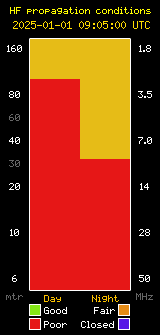The audio archive of this net can best be followed by downloading the .mp3 file for the appropriate date here and listening with the media player of your choice. You can move the progress slider forward or backward to the subject of interest to you.
We had another good net tonight with 10 check-ins plus net control, Frank, K6FLD and some chat room visitors! Tonight’s subjects included:
- Flex Radio – Opinion, features and functionality.
- Why does our 145.18 repeater phonetically announce MACRO-Error 9?
- Looking for new radio and getting into digital communications, does anyone have any experience with the ICOM 718 vs Yaesu FT450D?
- What is a static talk group on DMR (Digital Mobile Radio)?
- Configure ZUMSpot for static talk groups so you can hear traffic without keying up every 10-15 minutes.
Tune in to the SBARC TM&E Net every Thursday at 8:00 PM local (2000 Hrs) and see what interesting questions will arise or ask some of your own! All club members and visitors are encouraged to check in to the net each week and join in with questions and /or answers to and contribute the knowledge of new and seasoned amateur radio operators alike.












